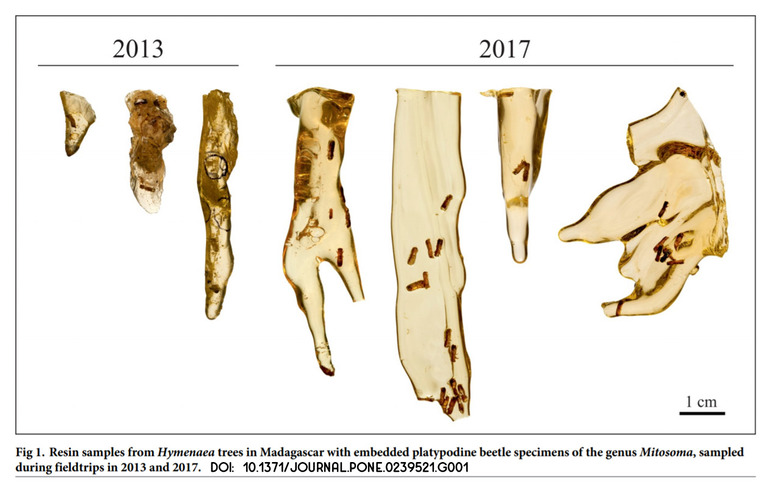Researchers Successfully Extract DNA From Insects Trapped In Resin
A study published this week showed how DNA could be extracted from bugs trapped in resin. If that sounds familiar, you've likely seen the film Jurassic Park. Before now, the business "Mr. DNA" speaks about in the film (and the original novel) wasn't technically possible. Early attempts at replicating the whole "extracting DNA from a million-year-old mosquito" process failed – so why did this more recent DNA extraction from bugs in resin succeed?
The process shown in Jurassic Park isn't possible because the process shown is so rudimentary, and the mosquitoes shown would (likely) be too ancient to have any sort of usable data – at least for what we'd use said data for today. In the film, Ian Malcolm suggests that Jurassic Park, as a project, would fail because the scientists that recreated dinosaurs didn't properly consider the consequences of their actions.
"I'll tell you the problem with the scientific power that you're using here: it didn't require any discipline to attain it. You read what others had done and you took the next step. You didn't earn the knowledge for yourselves, so you don't take any responsibility for it. You stood on the shoulders of geniuses to accomplish something as fast as you could..." – Ian Malcolm, Jurassic Park.
The researchers that've published this latest study understood that they needed to back up a bit, to start from the most basic place to take the first step. Instead of inspecting ancient bugs caught in ancient tree resin, they started with much more recently-generated resin that'd captured much more recently-living creatures.

"Instead of looking for DNA in amber of 100 million years old or more, to dream about the resurrection of dinosaurs, we should start by detecting it in insects trapped a few years ago in resin," said researcher David Peris. "Our new results show that it is indeed possible to genetically study organisms that were embedded in resin, although we do not know the time limit yet."
The samples used by this research team were two and six years old, far less ancient than previously-studied samples. They utilized polymerase chain reaction, allowing the detection of DNA via multiplied genetic material.
"This method allowed us to perform several authenticity checks, so that we could say certain that the detected DNA in our experiments was indeed from the beetles preserved in the resin," said researcher Kathrin Janssen. "Investigating the time limit of DNA conservation and many other related issues is the aim of future experiments."
To learn more, take a peek at the research paper DNA from resin-embedded organisms: past, present and future as authored by David Peris*, Kathrin Janssen*, H. Jonas Barthel, Gabriele Bierbaum, Xavier Delclòs, Enrique Peñalver, Mónica M. Solórzano-Kraemer, Bjarte H. Jordal, and Jes Rust. *Equal contribution. You can find this paper with code DOI: 10.1371/journal.pone.0239521 as published on September 28, 2020, in the scientific publication PLOS ONE.
